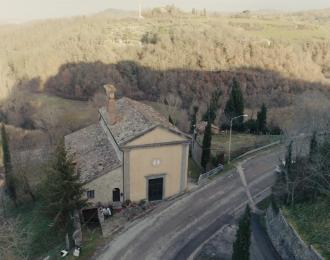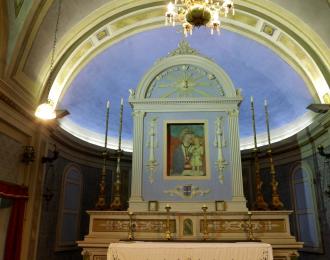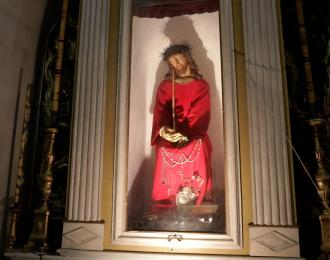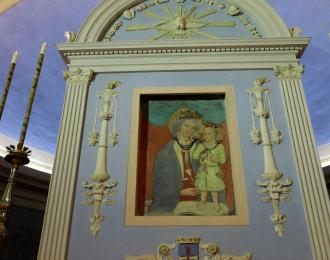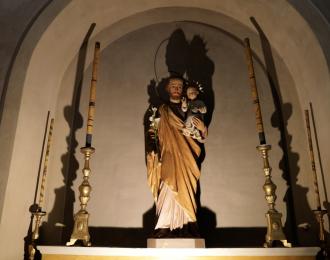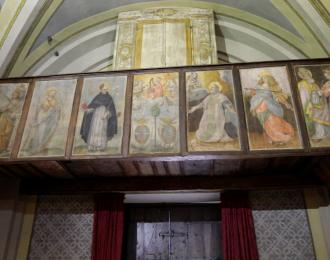Church of Madonna of the Cross
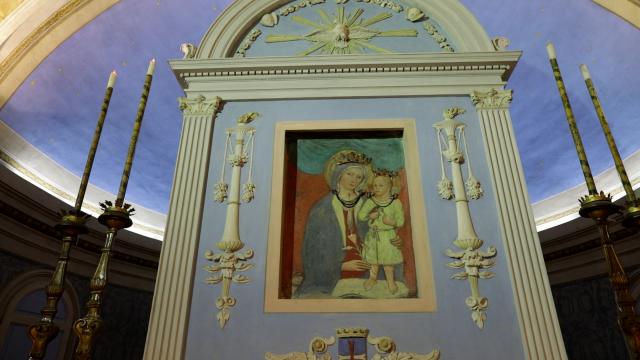
The small but precious Church of Madonna of the Cross is near one of the hairpin bends leading to Piegaro. It was presumably founded in the second half of the 16th century as seat of the Confraternity of the Cross. The emblem, consisting of a small Greek cross, frequently recurs in the church as a decorative element. The external façade is decorated with simple moulded cornices and by a central rose window, it was renovated in 1851, the date etched on the lintel of the entrance door. The structural layout has a single nave with a barrel vault interrupted by side rib vaults.
The ceiling frescoes, depicting the scenes of the Assumption of the Virgin and the inscription Ave Maria Gratia Plena, presumably date back to the 16th-17th centuries, but are in a poor condition due to the test of time and some renovations from later periods. The painting that adorns the main altar (17th cent.) portrays the Madonna with Child and is surrounded by decorative gilded stuccoes. In the altar on the left is a beautiful wooden statue representing the Ecce Homo, dating from around the 18th century; this sculpture is enriched by a wooden decoration in gold and blue with symbols of the passion. The image venerated in the altar on the right is St. Joseph with Child. Above the entrance portal there is still a choir from the late 16th century, with a series of eight wooden tempera painted panels.
The paintings, which are in a poor state of conservation, represent some saints, especially the central panel depicts a saint or biblical character (David?) with a stringed instrument and the coat of arms of the Confraternity of the Cross. To the side of the entrance portal there is a beautiful marble font from 1668 in the shape of a “boat“. At the base of this artefact is the usual coat of arms with the small cross. Inside the church we find two ancient illuminated parchments, namely a Brief by Urbano VIII Barberini, with the family coat of arms, dated 1632, and a handwritten document from the second half of the 16th century.
